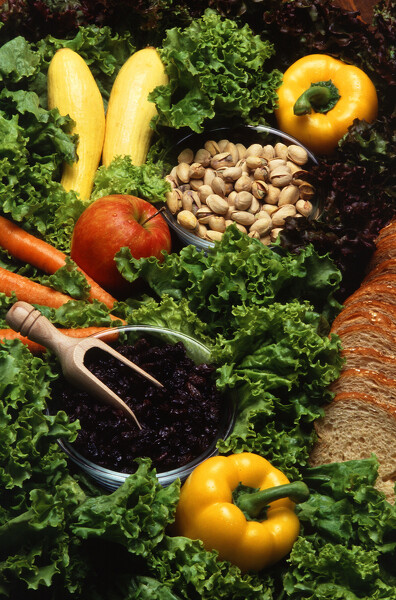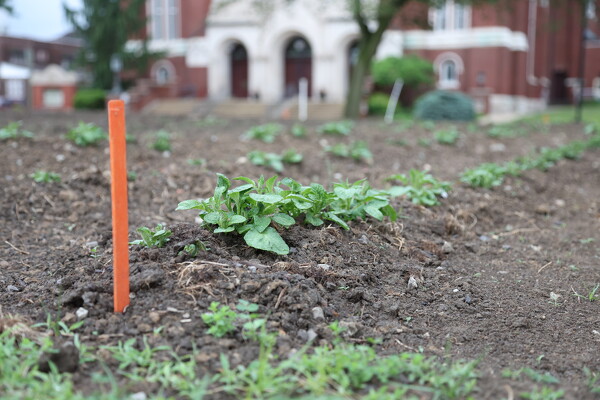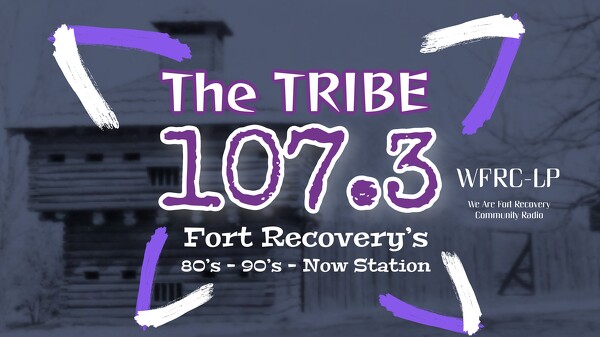
SNAP-Ed and the OSU Extension Agriculture and Natural Resources program together developed an educational garden in downtown Wapakoneta.
WAPAKONETA - A federally funded nutrition education and obesity prevention program that provides hands-on and evidence-based programs to locals of all ages with limited resources is in jeopardy, as federal cuts made in the House-passed reconciliation bill threaten to eliminate it.
Central to the One Big Beautiful Bill Act is the GOP's commitment to extending some $4.5 trillion in tax breaks engineered during President Donald Trump's first term in 2017, while temporarily adding new ones he campaigned on during his 2024 campaign, including no taxes on tips, overtime pay, car loan interest and others.
To make up for some of the lost tax revenue, the Republicans focused on changes to Medicaid and the Supplemental Nutrition Assistance (SNAP) program, largely by imposing work requirements on many of those receiving benefits and eliminating certain programs all together, like the SNAP Nutrition Education (SNAP-Ed) program.
The SNAP cuts were presented by the House Committee on Agriculture on May 13, prior to the bill's passage in the House. The committee billed the cuts as "efforts to restore integrity to the Supplemental Nutrition Assistance Program (SNAP)."
Chairman U.S. Rep. Glenn Thompson, R-PA, in a committee markup meeting, said that SNAP is clearly not working as Congress originally intended.
"We must ensure the proper incentives are in place for states to administer the program more effectively for those it serves, and this measure does just that-by aligning SNAP with other state-administered programs and requiring a minimal benefit cost share on the states," Thompson said.
One major reform mentioned in the committee markup was the elimination of "an ineffective and duplicative Snap Nutrition Education program (SNAP-Ed)," per the committee's website.
The House-passed reconciliation bill would, in the House Committee on Agriculture's view, end "a program that has yielded no meaningful change in the nutrition or obesity of SNAP participants, eliminating $536 million in annual spending wasted at the expense of the taxpayer," the website states.
Auglaize County SNAP-Ed Educator Sarah Goins disagreed with the committee's characterization of the program.
"Our program is effective and we want it to continue," she said. "It is not duplicative, as they mentioned. The words that they used in the proposal were very derogatory. But it really is its own unique program."
SNAP-Ed is different from, though somewhat related to, SNAP benefits, formerly known as food stamps. Federally funded SNAP benefits help supplement nutrition to lower income families. One in nine Ohioans receive SNAP benefits, Goins said.
In comparison, SNAP-Ed is an evidence-based program that helps people make their SNAP dollars stretch, teaches them how to shop for and cook healthy meals, and promotes physically active lifestyles, according to the USDA website.
"SNAP-Ed partners with state and local organizations to meet people where they are," the website states. "SNAP-Ed initiatives include nutrition education classes, social marketing campaigns, and efforts to improve policies, systems, and the environment of communities."
In Ohio, SNAP-Ed educators work through their county's Ohio State University Extension offices, Goins said.
"Our job is funded through the Obesity Prevention Act, through the USDA," she said. "What we do is we teach nutrition education, obesity prevention (and) physical activity to places, sites and people that qualify."
For a site to qualify for the education program, 50% or more must qualify to receive SNAP benefits, Goins said. A school can qualify if 50% or more students get free or reduced lunch.
"We are in many schools in Ohio. I'm currently in St. Mary's Intermediate School, that's where I am in Auglaize County," she said. "I plan to teach in 11 different classrooms this fall, that's what I have scheduled. Then, I also teach at about 14 other locations in Auglaize County, and I cover a little bit of Mercer too."

SNAP-Ed is an evidence-based program that shows people how to shop for and cook healthy meals, and promotes physically active lifestyles. Some of the lessons taught in the SNAP-Ed program involve the five food groups, known as MyPlate, formerly the food pyramid. Photo from USDA.
In fiscal year 2024, SNAP-Ed's direct nutrition education programs reached 586 participants in Mercer County and 1,128 participants in Auglaize County, per an OSU Extension handout. Last year across the state of Ohio 11,035 adults and 58,898 youth were impacted by OSU Extension SNAP-Ed programs and the Expanded Food and Nutrition Education Program.
At St. Marys Intermediate, Goins instructs a series of different classes to kids in grades 3-5.
For example, Goins teaches a six-week course once a week for 30 minutes on USDA's MyPlate, known as the official symbol of the five food groups.
"We talk about reducing sugary drinks. We talk about increasing physical activity, adding more fruits and vegetables. And we do exercises like label reading, how to identify a whole grain, what are healthy fats and unhealthy fats," she said. "The kids love the program. I also teach at the afterschool program there too. It's a lot of fun."
Also, she holds tastings of healthy recipes that the kids can try, which has led to a lot of good outcomes, she said.
"We have so much success in the kids recreating those (recipes) at home and getting involved in cooking, and just getting more familiar and comfortable preparing and choosing healthy foods," she added.

Auglaize County's SNAP-Ed garden teaches locals valuable skills needed to take food from the garden to the table.
Currently, SNAP-Ed and the Ohio State Extension Agriculture and Natural Resources program are together developing an educational garden capable of teaching the valuable skills needed to take food from the garden to the table, with all excess produce going to local food banks.
The massive garden, now in its first year, is located across from the Auglaize County Courthouse just beside the extension office in Wapakoneta.
"We have a very large community garden that we started right there in downtown Wapak. We have things starting to sprout up, I saw today," Goins said. "That is part of our program - I was able to help fund that garden with a SNAP-Ed mini-grant fund."
Working alongside kids from the Wapakoneta-based foster care nonprofit Generations of Love, Goins and extension ag educator Jacob Winters are teaching students that their food can be grown from home, outside of the grocery store.
"They've been helping to plant the garden, learning how to plant that, with the help of Jacob. Then once we get to harvest time, that'll be where I teach them how to prepare what we grew," she said. "So we're really giving the kids ownership, teaching them a new skill and showing that our food, it can be grown. It doesn't just appear at the grocery store. That's been really successful. And I'm excited to watch this program bloom and we're hoping to keep it going every year."
However, Goins' SNAP-Ed programs could cease to exist by the Fourth of July, which is the deadline Trump is pushing for the One Big Beautiful Bill to be passed by the Senate and on his desk for signature. According to Winters, if the bill is approved by the Senate, SNAP-Ed would be eliminated from all Ohio counties.
"This program is vital for the health of our community and local economy. We all benefit from a healthier community and SNAP-Ed is a vital part of the fabric of a healthier tomorrow," Winters said. "Without SNAP, our office will no longer have anyone available to teach in the areas of food and nutrition as we currently do not fund a Food and Consumer Science educator in Auglaize County."
Goins echoed the sentiment, and said she takes a lot of pride in the work she does through the SNAP-Ed program.
"I very much enjoy the mission," she said. "I have a lot of passion for it and I would love to see SNAP-Ed continue for our community."
-The Associated Press contributed to this report.



